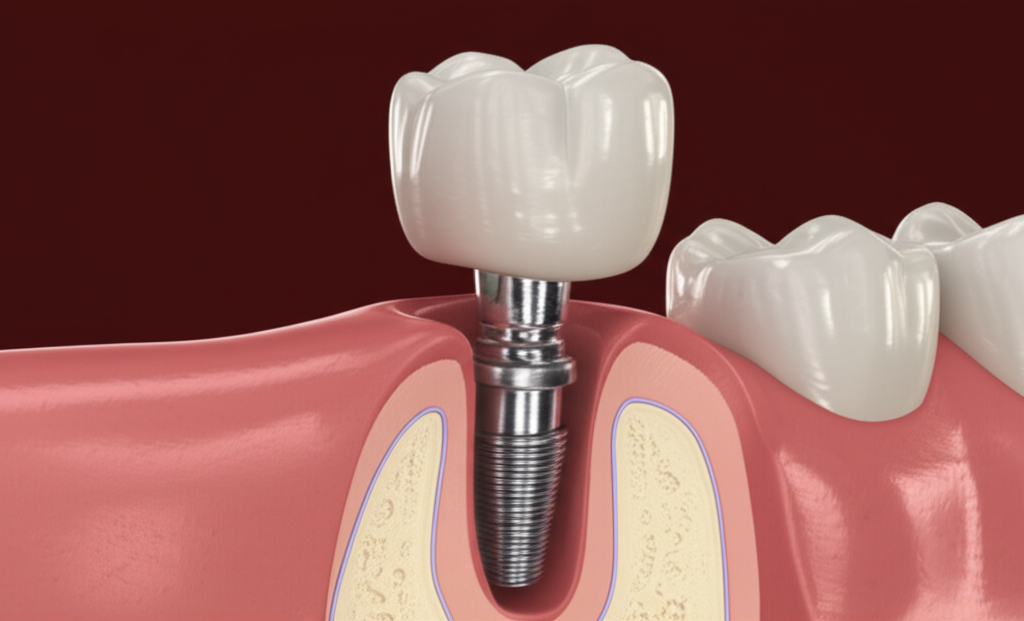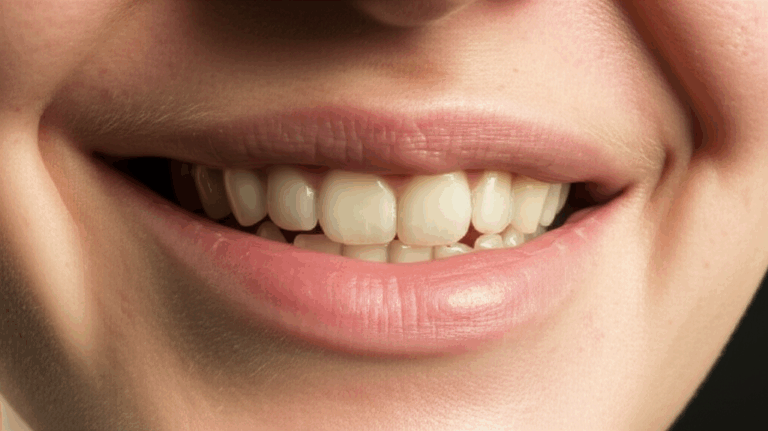
What Are Dental Implants? Your Complete, Compassionate Guide to Permanent Tooth Replacement
That missing tooth keeps bugging you—every bite, every time you look in the mirror. You’re not alone if you’ve ever asked yourself, “What are dental implants, really? Are they right for me, and what does getting one actually involve?” Maybe you’re here because a friend couldn’t stop talking about their new smile or your dentist suggested implants last time. No matter how you found this, trying to learn more is a great first step. Let’s walk through it together.
In This Article
A quick list of what’s below—click to move down the page:
- What Exactly Are Dental Implants? (The Core Definition)
- The Components of a Dental Implant
- How Dental Implants Work: Explained Simply
- Key Benefits of Dental Implants
- Are You a Candidate for Dental Implants?
- The Dental Implant Procedure: Step by Step
- How to Care for Your Dental Implants
- Dental Implants vs. Other Tooth Replacement Options
- Common Questions About Dental Implants
- Your Healthy Smile Takeaway
What Exactly Are Dental Implants? (The Core Definition)
Let’s get to the point: What are dental implants?
Dental implants are tiny, screw-like pieces—mainly made from titanium or tough ceramic—that a dentist puts right into your jawbone. You can think of them like modern “roots” for fake teeth. After some time, the bone grows around these posts. Once everything has healed, your dentist adds a new tooth on top, like a crown or even a row of teeth. The final thing feels secure and works almost like your old tooth.
Why do implants matter? After a tooth gets pulled, your jawbone starts to shrink (picture a muscle getting smaller if you don’t use it). Without a root or replacement, you can lose about 1/4 of that bone in just the first year. Dental implants are the only tooth replacement that keeps your jawbone strong and helps it stay the same shape.
Think of this: Your jaw is like a house’s base. You lose a tooth, and it’s like pulling out part of that base. The rest gets weaker. Implants “fix” that missing piece, holding up your smile now and down the road.
The Components of a Dental Implant
If you heard words like abutment or crown and felt confused, you’re not the only one—dental words can seem tricky! But here’s the easy run-down:
1. The Implant Post (Fixture)
This piece is the “root” stand-in, usually made from the same metal as used in airplanes (titanium) or a strong white ceramic. The dentist gently places it into your jaw in a simple surgery.
2. The Abutment
After your jawbone grows around the post, the dentist puts in the abutment. It’s like a little connector sticking just above your gum, letting your new tooth hook on.
3. The Prosthesis (Crown, Bridge, or Denture)
Last, your new tooth is made—a custom “cap” for one implant, a bridge for a row, or a whole row of teeth. Dental labs—including special crown and bridge lab teams—use easy tooth scans and strong ceramics to copy your smile.
Quick Table: Implant Parts
| Part | Made Of | What It Does |
|---|---|---|
| Post | Titanium/Zirconia | Hooks into bone (“root” job) |
| Abutment | Titanium/Zirconia | Connects post to visible new tooth |
| Prosthesis | Ceramic/Porcelain | The tooth you use and people notice |
How Dental Implants Work: Explained Simply
Let’s make things clear and simple. Here’s what really happens:
How long does it all take? Usually a few months. That’s mostly because your bone needs to heal around the implant. Sometimes, if your bone is strong, you may get an implant faster or even in a day.
Key Benefits of Dental Implants
Why do so many dentists swear by implants? Check out the main reasons:
1. Really Strong & Long-Lasting
With brushing, flossing, and going to the dentist, your implants could last 20–30 years or even for life. In comparison, bridges or dentures often get replaced every 5–10 years. Many people find implants are just a one-time deal.
2. Natural Look & Feel
People like how implants don’t just look like teeth—they act that way too. Eat, talk, laugh—there’s no slipping.
3. Keeps Jawbone and Face Shape
No implant, no bone use. Without that, bone shrinks. That can make cheeks look “saggy.” Implants keep your jaw solid.
4. Easy & Comfortable
No sticky glue. You just brush and floss like normal. Implants stay in—they don’t pop out or move around.
5. You Feel More Like You
From biting an apple to grinning, implants help you be yourself again.
Are You a Candidate for Dental Implants?
Most adults with missing teeth wonder, “Can I get implants?” Here’s what matters.
Basic Things You Need
- Healthy gums: No serious gum problems like bad gum disease
- Enough bone: You need solid jawbone. If you don’t, your dentist might suggest adding bone first.
- Good mouth habits: Brush, floss, visit the dentist!
- Healthy ways: Smoking or drinking a lot can hurt your chances.
- Health check: Some health problems (serious heart issues, very bad diabetes, weak bones) may make things harder.
Being Honest
If you lost a lot of teeth, have very little jawbone, or find taking care of your teeth hard, implants may not work for you—at least not right away. But small and full-mouth implants mean more people can get them now.
Short story? Your dentist or a tooth expert needs to check you out. If you’re interested, your next step is a check-up, often with a jaw scan or X-ray.
The Dental Implant Procedure: Step by Step
Think it might be long, scary, or painful? Here’s what really happens.
Step 1: First Visit & Getting Ready
You start off with a mouth check. The dentist uses an X-ray or scan to look at your gums and bone. You’ll talk about your options, the price, and when things will happen.
Step 2: Placing the Implant
With numbing medicine (and sometimes a calming pill or shot), the dentist puts the post in your jaw. You get a small “healing” cap or temporary tooth when you leave.
Step 3: Healing & Bone Joining
This part takes 3–6 months. Your body makes the bone lock to the implant. If you had bone added or things like smoking or diabetes, it can take a little longer.
Step 4: Adding the Abutment
The dentist gently shows the top of the post and puts on the connector.
Step 5: Placing the Final Tooth
The dental lab makes a custom “tooth” to go on top. When it’s ready, the dentist puts it in and makes sure it feels and looks right.
Think of building a house:
- First, set the base (implant).
- Wait for things to settle (bone healing).
- Add the upper parts (connector and tooth).
- Then, it’s done—a full, working smile again.
What happens behind the scenes? Special labs, like an implant dental laboratory, use digital scans, printers, and careful work to make real-looking, strong teeth.
How to Care for Your Dental Implants
You might ask, “Do I clean implants different from real teeth?” Here’s what you should know.
Daily Care
- Brush and Floss as Usual: Use a soft toothbrush. Gently floss or use small brushes to get around the implant.
- Try a Water Flosser: Some people like these gadgets for getting things out of hard spots.
- Rinse Softly: A gentle mouthwash can help keep germs away.
Regular Dental Visits
Go to your dentist every 6 months for a cleaning. They’ll check the implant and gums.
Try to Avoid
- Chewing hard stuff: Things like hard candy or chewing ice can break even tough fake teeth.
- Smoking: This can make it take longer to heal and raises the chance of problems.
- Grinding teeth: If you grind or clench your teeth, your dentist might give you a mouth guard for sleeping.
Being Careful Helps!
With good care, implants can last for many years—even all your life. If you have questions about cleaning, just ask the dentist on your next visit, or look up more information about teeth health.
Dental Implants vs. Other Tooth Replacement Options
A common question: “Why get implants instead of a bridge or denture?” Here’s the simple answer:
| Dental Implants | Traditional Bridge | Dentures |
|---|---|---|
| Stay put, don’t move | Hold still, but push on nearby teeth | Can be taken out, might move |
| Last 20+ years | Last 7–10 years | Last 5–10 years |
| Keep jawbone healthy | Don’t help the jawbone | Don’t help the jawbone |
| Don’t hurt other teeth | Grind down teeth on sides | Might make eating and talking hard |
Easy way to see it: Losing a tooth is like taking a brick from a wall. A bridge fills the gap by leaning on the bricks next to it, but has to sand them down. A denture covers the empty spot but isn’t attached. Only implants put the “brick” back—making things whole again.
Common Questions About Dental Implants
Let’s answer some big worries folks have:
Are dental implants painful?
Getting an implant usually hurts less than having a tooth pulled. Most people just have a little pain or swelling for a few days. You get numbing medicine during it, so you shouldn’t feel pain while it happens.
How much do dental implants cost?
In the U.S., one implant (the post, abutment, and tooth) usually costs between $3,000 and $6,000. If you need extra bone, pulling teeth, or more implants, it costs more. Even though it costs a lot up front, implants can last much, much longer than the other options.
What is the success rate?
Dental implants work well for 95–98% of healthy adults who don’t smoke. That’s why dentists trust them. The key? Clean teeth, strong bone, regular dentist visits.
Are there any risks or downsides?
Like any surgery, there’s a small chance of infection, nerve harm, or trouble with sinuses—but these things don’t happen much. Bad gum health or a lot of smoking can hurt your chances.
Can I get implants at any age?
If you’re healthy and your jaw has stopped growing (usually when you’re an adult), you can get implants. Many older people do well with them.
Your Healthy Smile Takeaway
Here’s the big picture:
- Dental implants are fake roots holding fake teeth, letting you eat, talk, and smile like before.
- They keep your jaw and face looking the same and help you feel good about your teeth.
- It takes time, money, and care, but implants often last for decades (sometimes for life).
- Not everyone can get one, but there are more ways than ever to help—like mini implants or whole-mouth options.
What’s next?
- Don’t let worry stop you. Have a talk with your dentist to see if implants work for you.
- Brush and floss every day and keep your dentist appointments—whether you have implants yet or not.
- Still want to learn more? Try looking up more solid teeth information.
The Empowering Bottom Line
Missing teeth shouldn’t keep you from eating, talking, or smiling. Dental implants are a strong, real-feeling choice that might change your life—from your mouth to your confidence. You have the power to take the next step. All it takes? Just one honest talk with your dentist. That’ll get you started on the way to a healthier, happier version of you.
Ready? Book your check-up, ask your questions, and get set to show off your best smile yet.








